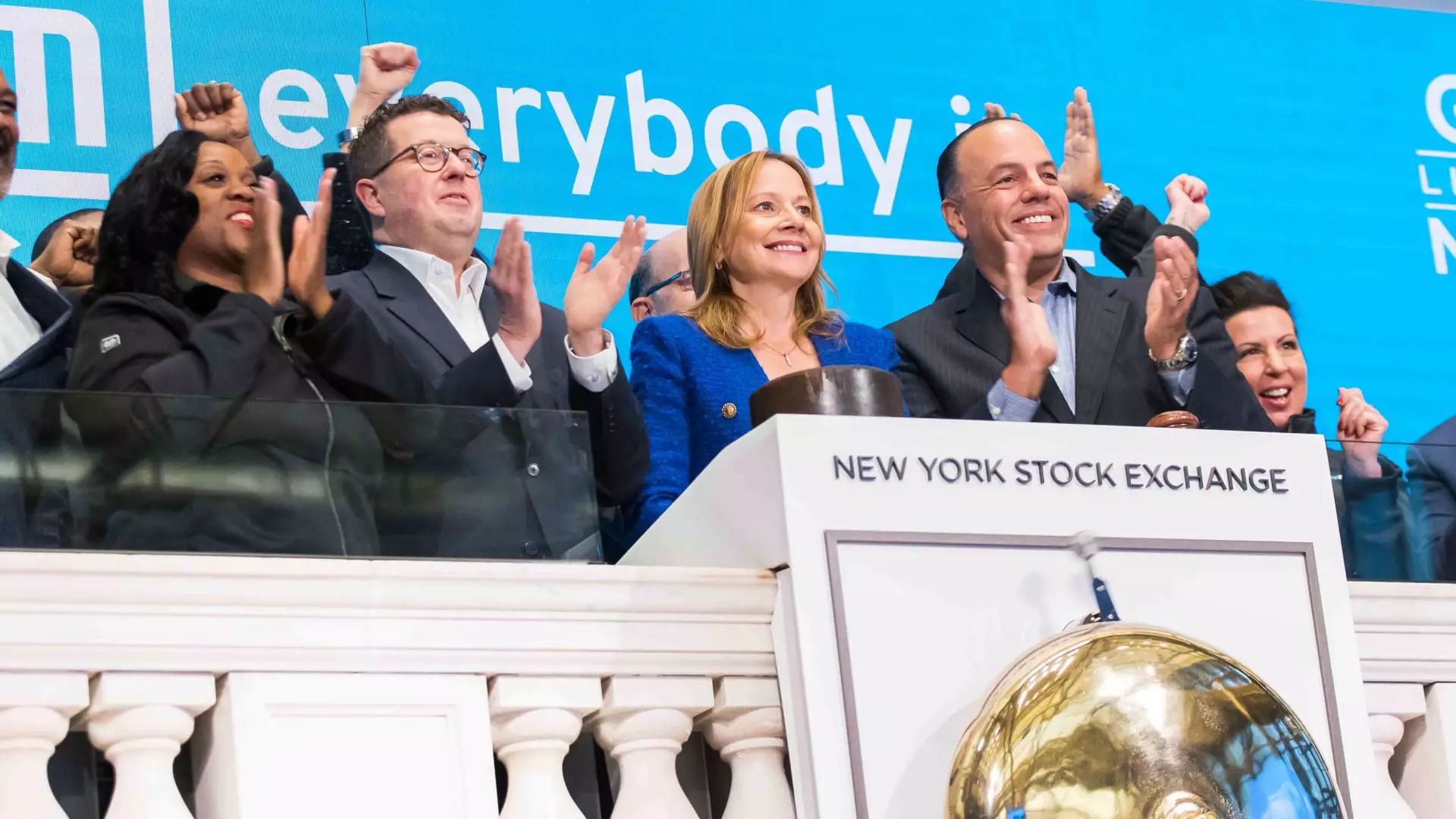General Motors (GM), one of the leading automotive manufacturers in the world, recently announced a series of significant financial actions aimed at rewarding its shareholders while navigating a challenging market landscape. As a company with a storied history and a crucial role in the American auto industry, GM’s latest decisions merit a closer examination. The firm is not only raising its quarterly dividend but is also launching an extensive share repurchase program, reflecting a dual strategy of immediate shareholder returns and long-term fiscal commitment.
In a noteworthy move, GM declared an increase in its quarterly dividend by 25%, bringing it to 15 cents per share. This strategic decision parallels that of Ford Motor Company, signaling a potential shift in how automotive giants are positioning themselves amidst fluctuating sales and profitability rates. While raising dividends is often a sign of a healthy financial state, it also raises questions about future growth opportunities and whether such distributions could detract from reinvestment in innovative projects. The announced increase is expected to take effect in April, showcasing GM’s commitment to maintaining competitive edge in the marketplace.
Alongside the dividend increase, GM initiated a new $6 billion share repurchase program, intended to bolster investor confidence and signal financial health. Of this total, $2 billion is earmarked for completion during the second quarter. Share repurchase plans generally aim to reduce the number of outstanding shares, which potentially increases earnings per share and provides a boost to stock prices in the long term. However, while these endeavors may seem prudent, they also raise concerns regarding the sustainability of growth, especially in light of the observed slowdown in industry sales.
The choice of investment banks—JPMorgan and Barclays—to manage this repurchase program reflects GM’s strategic desire to execute buybacks efficiently. Shareholders often welcome such actions, perceiving them as evidence of a company with sufficient cash flow to invest back into its own equity. Nevertheless, the underlying issues affecting GM’s stock performance this year— a downturn of over 12%—prompt scrutiny regarding the long-term impact of these financial maneuvers.
Despite GM’s recent initiatives, Wall Street analysts have highlighted various challenges confronting the company. Sluggish industry sales, looming regulatory concerns, and an overall lack of growth potential have dampened investor enthusiasm. GM’s stock performance indicates a paradox: strong quarterly results and strategic capital allocations have not translated into a positive stock trajectory. This discrepancy warrants a deeper investigation into GM’s operational health and market position in an industry facing monumental shifts, including moves towards electric vehicles and autonomous driving technology.
GM’s guidance for 2025 projects a net income attributable to stockholders in the range of $11.2 billion to $12.5 billion, alongside adjusted EBIT estimates from $13.7 billion to $15.7 billion. These forecasts reflect GM’s belief in its robust business plan amid current headwinds. While the company’s CFO, Paul Jacobson, maintains confidence in GM’s strategic direction and capital allocation policies, industry analysts remain cautious. The recent record of shareholder returns stands in stark contrast to growing market dilemmas, pushing GM to remain agile and responsive to evolving public policies and consumer demands.
While GM’s increase in dividends and share buybacks demonstrates a commitment to shareholders, the challenge remains for the company to adapt to a rapidly changing automotive landscape. Keeping a keen eye on innovation, responding to regulatory environments, and sustaining profit growth are crucial for GM to navigate the evolving market dynamics successfully. Stakeholders will be watching closely to see how GM balances its capital distribution with the necessary investments in modernization and future growth.

